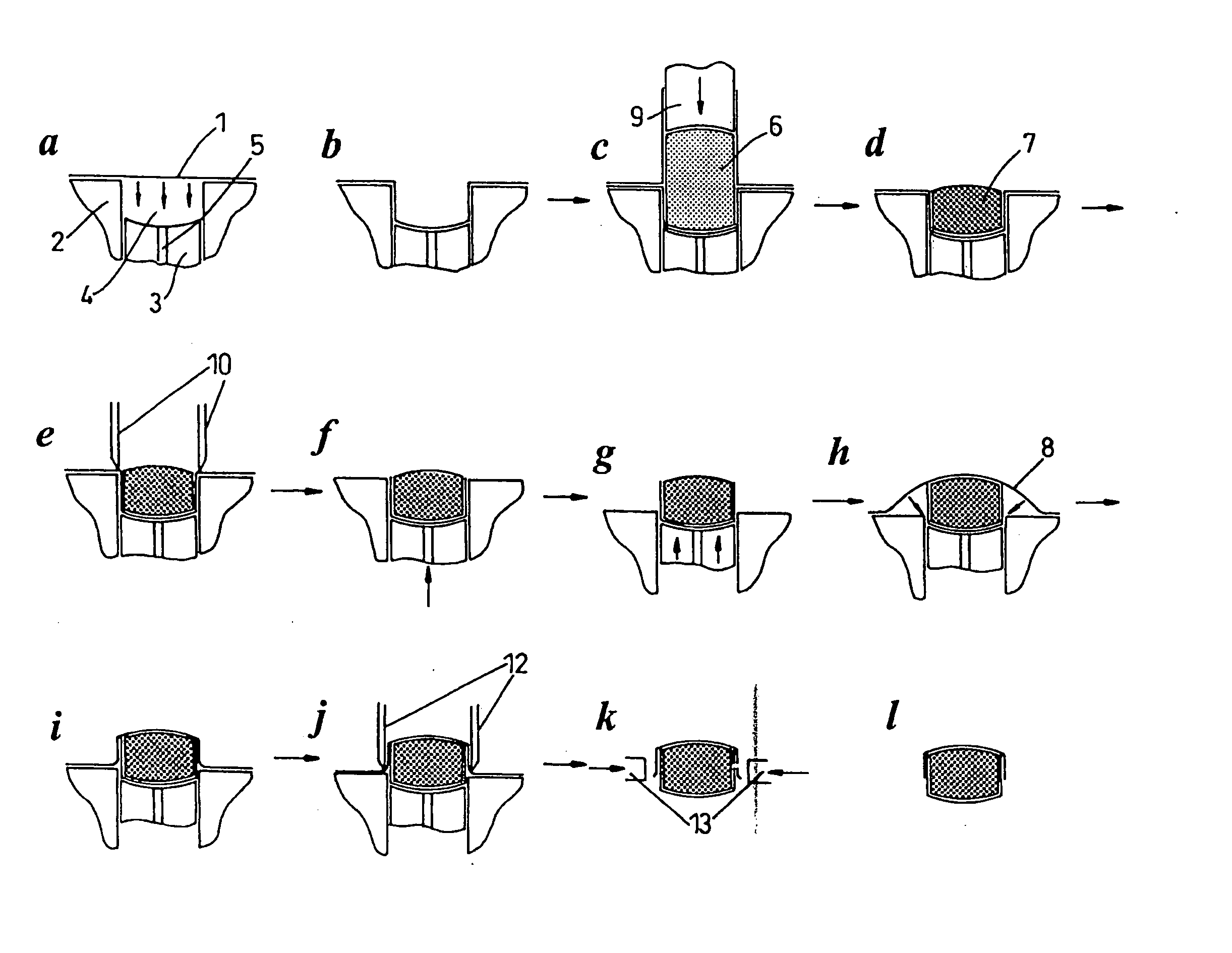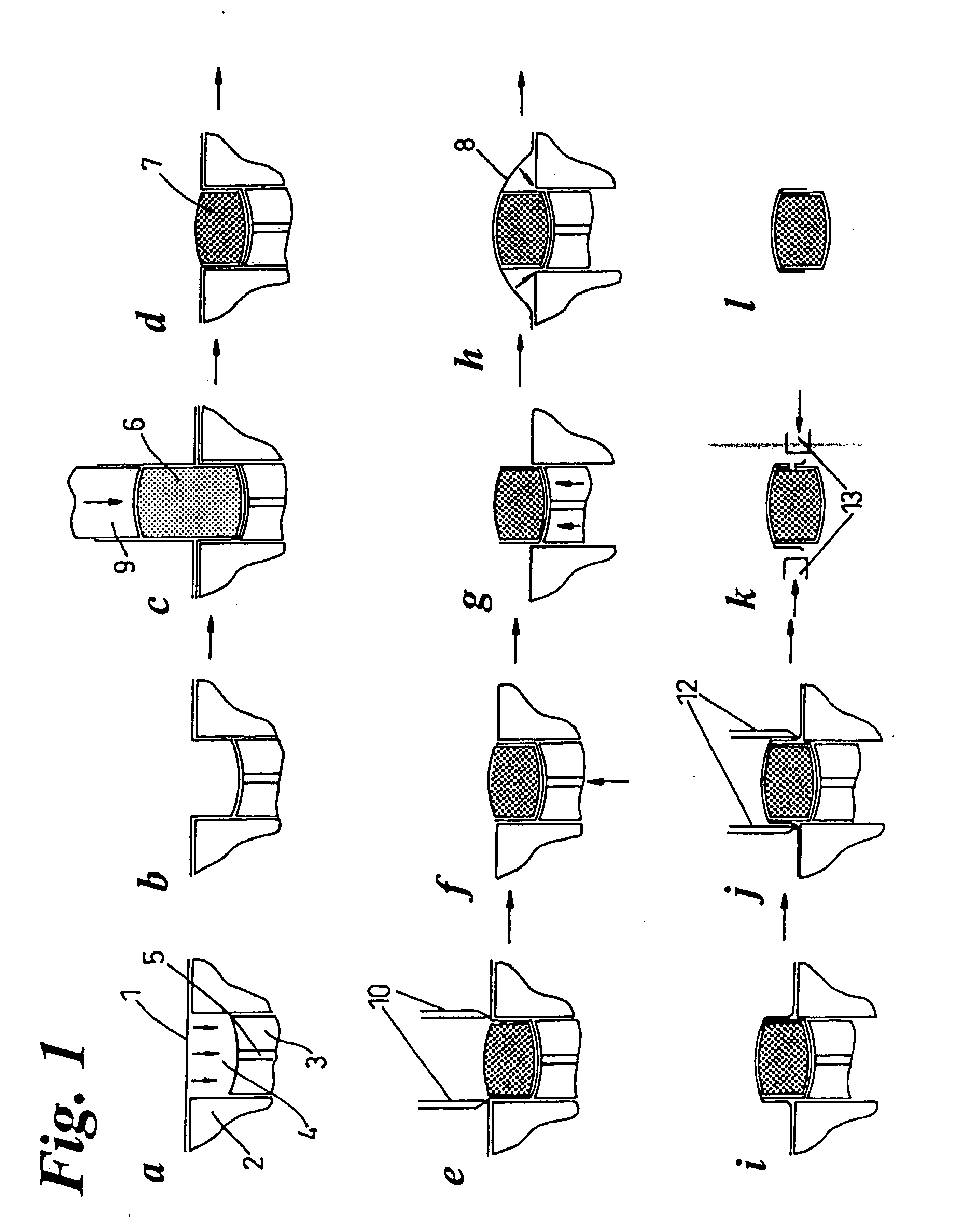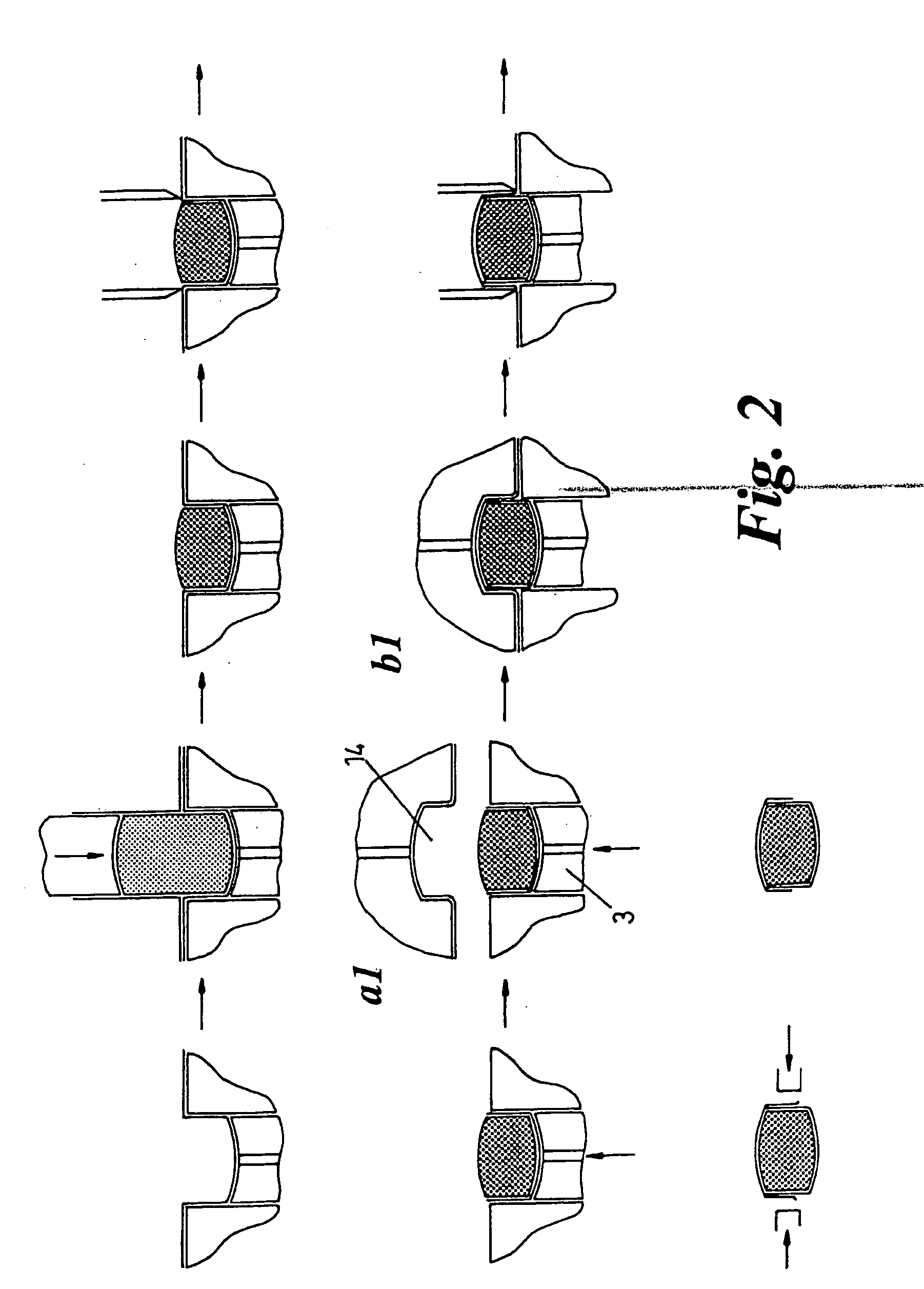[0007] A non
gelatin film layer is thermoformed into a suitable tablet shaped pocket under the influence of heat and / or vacuum, and / or pressure. A pre-determined
mass of powder is dosed into the film formed pocket, and compressed into a tablet shape e.g. with the aid of a
piston or pistons. A partially enrobed ‘soft’ tablet results from this process, which is then fully enrobed by a second sequence of events which involves the raising of the tablet above a platten which allows the remainder of the compressed tablet to be enrobed by a second film. Suitable tablet shaped pockets can be created by using e.g. a pair of pistons slideable within a cylinder, such pistons also having the
advantage of being able to form pinch points between the platen and the top of cylinders which are useful for
cutting away unwanted excess film from the (partially) enrobed tablets.
[0010] Another aim of the present invention is to produce a capsule with a high gloss surface which is able to adopt an underlying embossment, e.g. to identify a pharmaceutical tablet.
[0014] Another aim of the present invention is to produce capsules, which by their nature, are easy to swallow, and more easily can be conveyed to the site where it is desirable where the active ingredients are most advantageously released.
[0017] Another aspect of the present invention is a method of producing a capsule by enrobing powder, in which, because of the nature of capsule produced, certain ancillary ingredients necessary in conventional tablet production, can be omitted. For example, ingredients in a tablet which are added to give the tablet its
structural integrity can be omitted, because the active ingredients are in powder form, relatively loosely compacted are encapsulated within a film, such film which now securely packages the powder / ingredients, thus giving integrity and forming a discrete effective
dosage form. Because of the aforementioned, components contained within a tablet which are designed to disperse and break up the tablet when it has reached the site of delivery, can be omitted, as the active ingredients in the capsule according to the present invention are in a non-compacted or at least less compacted form as compared to a conventional tablet, and this lesser compaction leads to the easy release and dispersal of active ingredients once the capsule film has dissolved, e.g. at the intended site of delivery.
[0028] Because of the nature of the film forming process according to the present invention, under certain circumstances, e.g. where the powder to be compacted contains particles which, under compaction, have the ability to pierce film, it may be advantageous to have the thickness of the film formed in the pocket to be greater than that of the film which is to cover the remainder of the compacted powder
slug (in the second and final phase of enrobement of the compacted powder). Such differential thickness may give rise to certain advantageous structural features of the
resultant capsule; the capsule my be generally more robust and so may be more safely stored and handled (generally thicker film on the capsule), but such capsule also possessing a smaller area (window) of weaker, thinner film which can give rise to quicker release characteristics by the thinner film will dissolving more quickly when exposed to any given
solvent. An advantageous differential film thickness to form a capsule with wall of different thickness, could be e.g. 70 / 90 micron film coordination to produce capsules which are robust but which release their contents quickly, through a window of thinner film.
[0030] According to one aspect of the invention, the method involves forming two separate overlapping half coatings of film, effectively on the compacted powder
slug. The method preferably involves, first forming a film in a pocket, then compacting a powder
slug into the film lined pocket, thereby effectively
coating / encapsulating a substantial portion of a powder slug within a film formed into a partial capsule, removing the remaining
film material not coating the compacted powder slug e.g. by
cutting, then coating the remaining half of the compacted powder slug, with overlapping portions of the two coatings sealed together to provide a sealed complete
enclosure for the slug, and again removing remaining surplus
film material not coated on the slug. It may be necessary to apply
adhesive material between the overlapping film coatings e.g. to the surface of the film
layers, to ensure the formation of an effective seal therebetween and to make the
resultant capsule tamper-evident. The
adhesive material conveniently has the same composition as the film, but with a greater proportion of plasticiser, e.g. 93% to 98% by weight plasticiser, so as to provide a less
viscous material. The
adhesive material may be applied, e.g. by use of a roller, spraying etc. A typical adhesive formulation, with % representing % by weight, is HPMC 4%,
lactic acid 77%, water 19%.
 Login to View More
Login to View More 


